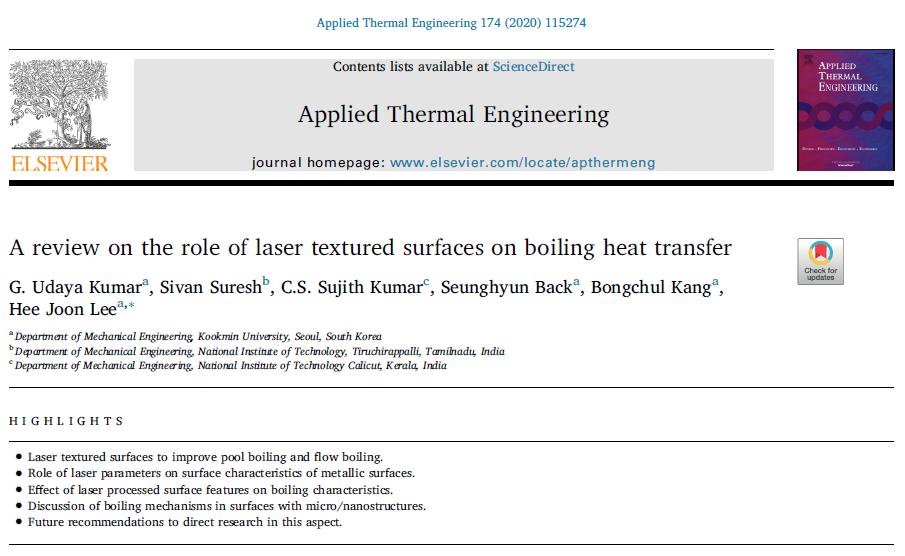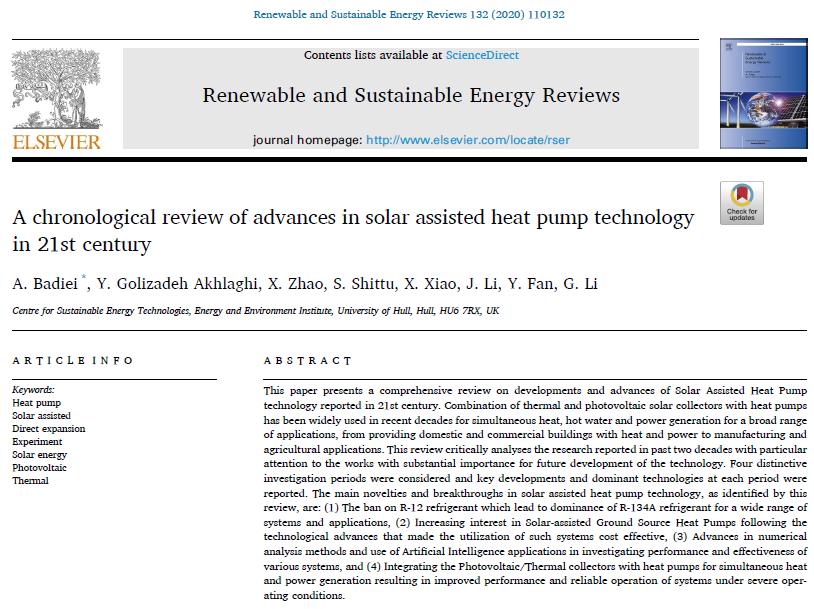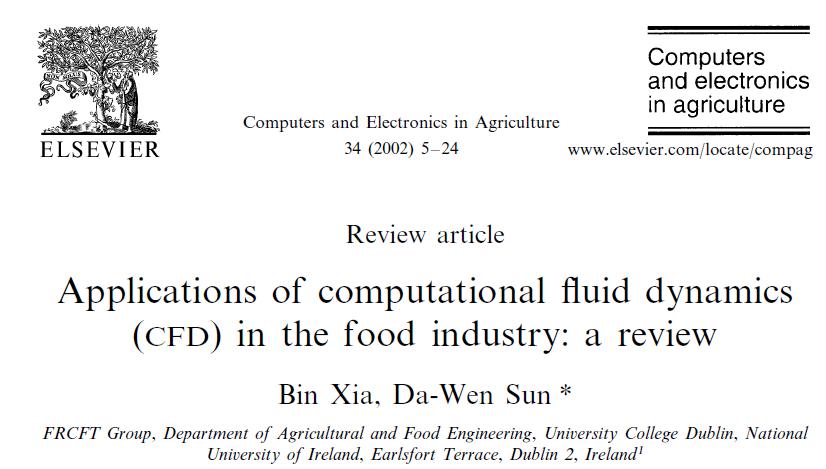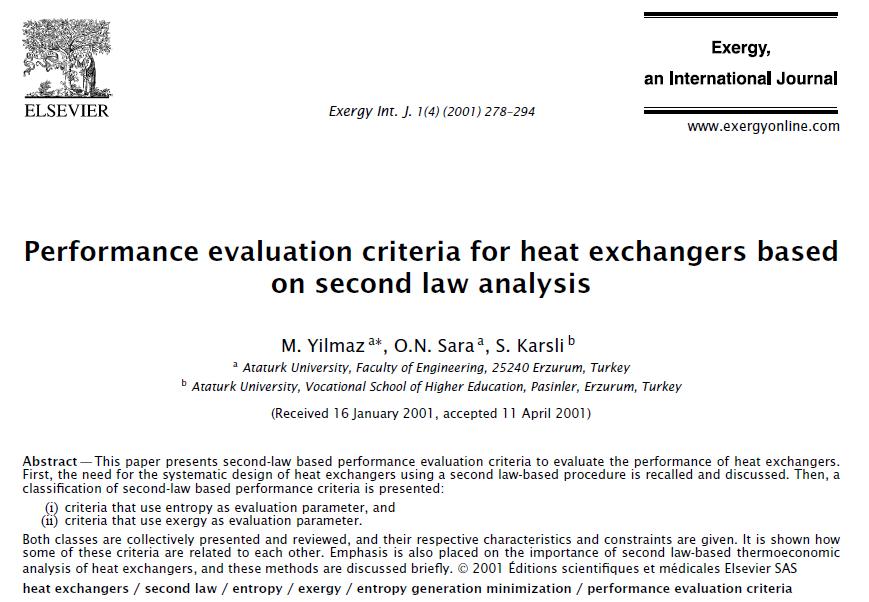دانلود مقاله مروری بر افزایش انتقال حرارت جوششی نانوسیالها و پوششهای نانو A review of enhancement of boiling heat transfer through nanofluids and nanoparticle coatings

This review traces the development of nanofluid pool boiling from its beginning (1984) to the
present through a sampling of studies that have interested the authors and which have led to the
latest findings at the University of Texas at Arlington (UTA). The studies of thermophysical
properties of nanofluids are briefly covered. Several works in the last 7 years are highlighted to
illustrate the modes of nanofluid pool boiling testing, the variability of nanofluid boiling heat
transfer (BHT), and the postulations of causes of this behavior. Starting in 2006, the wettability
increase in the nanoparticle coating, generated during the nanofluid pool boiling, is recognized as
the source of critical heat flux (CHF) enhancement through its effect on the dynamics of hot spots
and departing bubbles. The reasons for the observed contradictory BHT behavior are not yet fully
clear, but recently at UTA, nanofluid boiling heat transfer has shown to be transient due to the
dynamic nature of the formation of the nanoparticle coating. Also at UTA, the mechanism of
nanoparticle deposition on the heated surface has been further confirmed. Thus, nanofluid boiling
has led back to heat transfer enhancement through surface modification in nanoscale. These
developments from 2006 are covered in more detail.
دانلود مقاله مروری بر انتقال حرارت جوششی نانو سیال ها A review of flow boiling heat transfer of nanofluids

The flow boiling heat transfer of nanofluids is an important research area which provides many
opportunities to explore new frontiers but also poses great challenges. This paper presents a
comprehensive review on the flow boiling heat transfer of nanofluids, with an emphasis on the heat
transfer coefficient (HTC), critical heat flux (CHF), pressure drop, nanofluid stability, flow and heat
transfer mechanism, and flow pattern and bubble dynamics. Most of the available articles have been
related to the first four topics. Studies related to the last two topics are rare, which are reviewed
because of their importance. The important achievements, inconsistence, and contradictions of the
existing research results are identified, and several topics worthy of attention for future investigations
are identified.
دانلود مقاله مروری بر نقش سطوح حکاکی شده با لیزر روی انتقال حرارت جوششی A review on the role of laser textured surfaces on boiling heat transfer

Laser texturing can effectively obtain the desired surface features on metals through melting and solidification,
or through laser-based additive manufacturing techniques. In phase-change heat transfer applications, such
modified surfaces can be both beneficial and durable. Surface modification by ultrafast processing lasers alters
the heat transfer performances of boiling systems. This review summarizes the work leading to these technologies
and their role in influencing the performance of boiling systems. It first discusses the types and material
processing mechanism of lasers. Then, the applications of laser-textured surfaces in pool boiling and flow boiling
are discussed in detail. Different types of surface patterns can be fabricated on boiling surfaces depending on
experimental requirements. It is clearly evident that the design parameters and surface characteristics like
surface roughness, surface wettability, and porosity can be easily controlled by controlling the laser parameters.
Also, heat transfer performance of the textured surfaces changes as compared to the surfaces without any texturing.
As surface features generated as a result of laser texturing are permanent, the durability of the structures
can be increased with prolonged boiling performance. The review concludes with future recommendations for
identifying the research gaps and improving the heat transfer processes by laser-textured surfaces.
دانلود مقاله مرور خلاصه ای بر تاثیر پوشش های سطحی مختلف بر افزایش انتقال حرارت جوشش استخری Influence of different surface coatings on pool boiling heat transfer enhancement: A brief review

The below article provides a brief review of the previously published article on the improvement of pool
boiling heat transfer by modifying the surfaces in different coating techniques. Due to the surface modification
in different coating techniques, the active nucleation site density increases on surfaces, which
leads to enhancement of both heat transfer coefficient (HTC) and Critical Heat flux (CHF). Another reason
for enhancement of boiling heat transfer coefficient is enhancing the uniformity of coating over the heating
surface. This literature also incorporate how the wettability of the surface affect the HTC and CHF
related to different contact angle of working fluid. Different coating material also affects the wettability.
The coating time is found as one of the important parameter on this extensive survey on which affects the
pool Boiling heat Transfer a lot. The heat transfer performance of treated, untreated surface by different
coating techniques also incorporated in the article. The use of different coating techniques such as sintering,
brazing, spraying and electrodeposition was also incorporated in the literature. By using different
coating technique the coating can be formed on the substrate and on that surface Pool boiling occurs
which has a wide application in different industries.
Selection and of the scientific committee of the 10th International Conference of Materials Processing and
Characterization.
دانلود مقاله مروری بر کاربردهای نانومبردها و نانو روانسازها در سیستمهای تبرید، تهویه مطبوع و پمپ حرارتی Applications of nanorefrigerant and nanolubricants in refrigeration, air-conditioning and heat pump systems: A review

Nanorefrigerants are a special type of nanofluidswhich are mixtures of nanoparticles and refrigerants and have a
broad range of applications in diverse fields for instance refrigeration, air conditioning systems, and heat pumps.
In this paper thermal–physical properties of nanoparticles suspended in refrigerant and lubricating oils of
refrigerating systems were reviewed. The effects of nanolubricants on boiling and two phase flow phenomena
are presented as well. Based on results available in the literatures, it has been found that nanorefrigerants have
a much higher and strongly temperature-dependent thermal conductivity at very low particle concentrations
than conventional refrigerant. This can be considered as one of the key parameters for enhanced performance
for refrigeration and air conditioning systems. Because of its superior thermal performances, latest up to date
literatures on this property have been summarized and presented in this paper as well. The results indicate
that HFC134a and mineral oil with TiO2 nanoparticles work normally and safely in the refrigerator with better
performance. The energy consumption of the HFC134a refrigerant using mineral oil and nanoparticles mixture
as lubricant saved 26.1% energy with 0.1% mass fraction TiO2 nanoparticles compared to the HFC134a and POE
oil system.
دانلود مقاله مروری تاریخی بر پیشرفتهای فناوری پمپ های حرارتی کمک شونده با انرژی خورشیدی در قرن بیست و یکم A chronological review of advances in solar assisted heat pump technology in 21st century

This paper presents a comprehensive review on developments and advances of Solar Assisted Heat Pump
technology reported in 21st century. Combination of thermal and photovoltaic solar collectors with heat pumps
has been widely used in recent decades for simultaneous heat, hot water and power generation for a broad range
of applications, from providing domestic and commercial buildings with heat and power to manufacturing and
agricultural applications. This review critically analyses the research reported in past two decades with particular
attention to the works with substantial importance for future development of the technology. Four distinctive
investigation periods were considered and key developments and dominant technologies at each period were
reported. The main novelties and breakthroughs in solar assisted heat pump technology, as identified by this
review, are: (1) The ban on R-12 refrigerant which lead to dominance of R-134A refrigerant for a wide range of
systems and applications, (2) Increasing interest in Solar-assisted Ground Source Heat Pumps following the
technological advances that made the utilization of such systems cost effective, (3) Advances in numerical
analysis methods and use of Artificial Intelligence applications in investigating performance and effectiveness of
various systems, and (4) Integrating the Photovoltaic/Thermal collectors with heat pumps for simultaneous heat
and power generation resulting in improved performance and reliable operation of systems under severe operating
conditions.
دانلود مقاله مروری بر تولید انتروپی در میکرو کانالها A review of entropy generation in microchannels

در این مقاله مروری بر تحقیقات قبلی دربارۀ تولید انتروپی در میکروکانالها انجام گرفته است.
دانلود مقاله مروری بر کاربردهای دینامیک سیالات محاسباتی در صنایع غذایی Applications of computational fluid dynamics (CFD) in the food industry: a review

در این مقاله 20 صفحه ای دربارۀ کاربردهای دینامیک سیالات محاسباتی در صنایع غذایی صحبت شده است. فرایندهای
drying, sterilisation, refrigeration and mixing
بطور ویژه مورد توجه قرار گرفته اند.
دانلود مقاله معیار تخمین کارایی برای مبدلهای حرارتی (تبادلگرهای گرما) بر مبنای تحلیل قانون دوم Performance evaluation criteria for heat exchangers based on second law analysis

در این مقاله 17 صفحه ای، نحوه ارزیابی عملکرد تبادلگرهای گرما با استفاده از قانون دوم ترمودینامیک تشریح شده است.
دانلود مقاله فومهای فلزی-تولید و فیزیک فومسازی METAL FOAMS – MANUFACTURE AND PHYSICS OF FOAMING

در این مقاله روشهای تولید فومهای فلزی تشریح شده است. این فومها در کاربردهای مختلف صنعتی از جمله افزایش انتقال حرارت، فیلتراسیون و .... کاربردهای جالبی دارند.